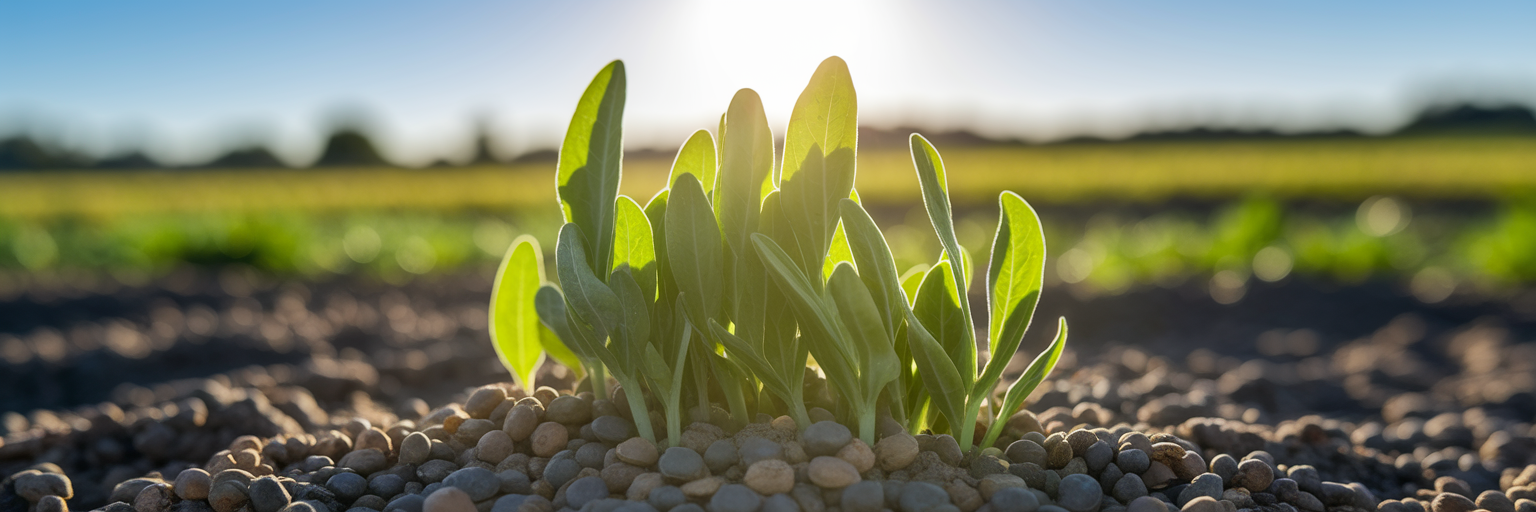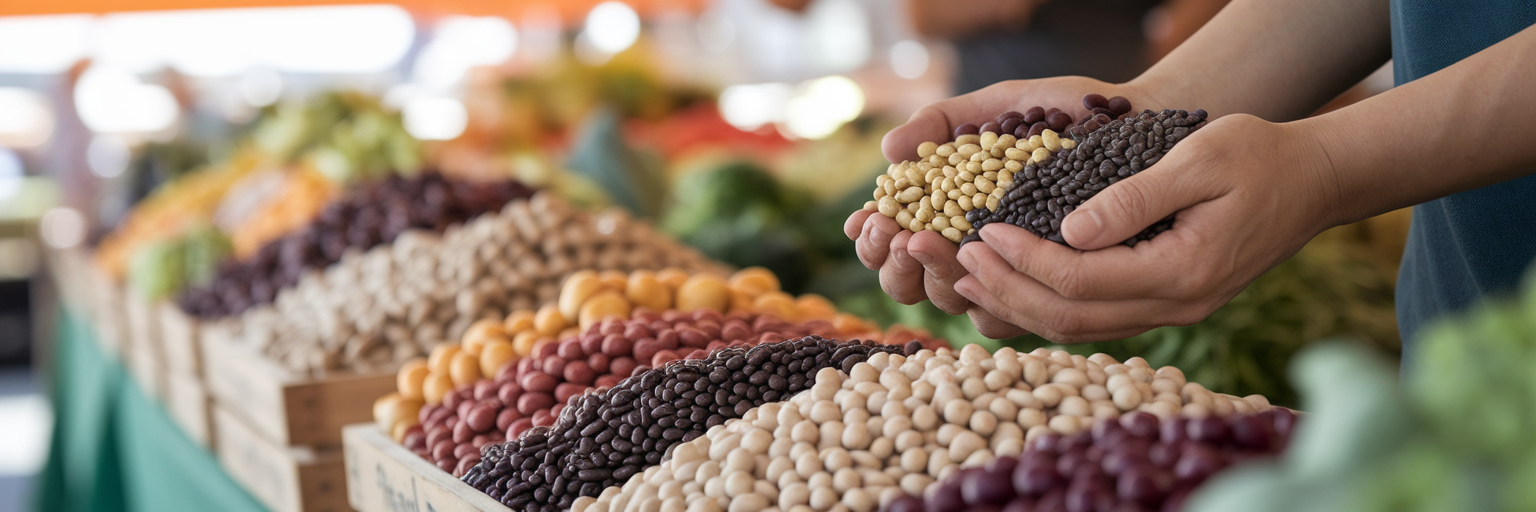The Big Picture on Your Plate
Every meal we eat is an opportunity to make a choice that feels good, not just for our bodies, but for the world around us. It’s easy to feel overwhelmed by big environmental challenges, but the power we hold is right on our plates. This isn't about perfection or guilt. It's about understanding where we can make a real difference, and the data points to a clear path forward.
A comprehensive 2021 study published in Nature Food gave us a powerful insight: animal agriculture is responsible for about 57% of all greenhouse gas emissions from food production. In stark contrast, growing and processing plant-based foods accounts for just 29%. Seeing these numbers isn't about pointing fingers. Instead, it’s like being handed a map that shows the most direct route to a healthier planet. It highlights that shifting toward more plant-based proteins is one of the most effective actions any of us can take.
Learning how to eat sustainably begins with these small, conscious decisions. It’s about aligning our daily habits with our desire for a thriving planet, one delicious meal at a time. The journey starts with simply understanding the story behind our food.
Decoding the Carbon Footprint of Protein

We hear the term "carbon footprint" a lot, but what does it actually mean for our food? Think of it as the total environmental bill for getting a meal to your table. It includes all the greenhouse gases released during the entire process: growing animal feed, using fertilizers, processing, packaging, and transportation. Every step has a cost, and some costs are much higher than others.
This is where choosing a low carbon footprint protein becomes so impactful. Plant-based proteins are fundamentally more efficient. They don't involve raising livestock, which produces significant amounts of methane, a potent greenhouse gas. They also require far less land and energy to grow. The difference isn't minor; it's massive.
When you compare beef to options like lentils or tofu, the contrast is staggering. The journey of a plant protein from soil to plate is simply shorter and cleaner, leaving a much lighter touch on the atmosphere. This efficiency is a cornerstone of a sustainable diet, making plant-based foods a powerful tool for climate action.
| Protein Source (per 100g of protein) | Greenhouse Gas Emissions (kg CO2eq) | Land Use (m²) | Water Use (Liters) |
|---|---|---|---|
| Beef (Beef Herd) | 49.89 | 163.63 | 15,415 |
| Chicken | 5.7 | 7.61 | 4,325 |
| Tofu | 1.98 | 2.21 | 280 |
| Lentils | 0.75 | 3.45 | 5,874 |
| Beans | 0.62 | 3.41 | 4,055 |
Note: Data is sourced from comprehensive analyses by Our World in Data, based on studies from Poore & Nemecek (2018). Figures for water use in lentils and beans reflect total water footprint, including rainwater, while tofu's lower figure reflects processed water use.
Saving Land and Water with Every Meal
The environmental benefits of plant-based proteins extend far beyond just carbon emissions. They also have a profound impact on two of our planet's most vital resources: land and water. Choosing plants is an act of conservation that helps protect and restore our natural world.
Reclaiming Our Land
A huge driver of global deforestation is the need for more land for animal agriculture, both for grazing and for growing feed crops like soy and corn. This process destroys critical ecosystems, displaces wildlife, and reduces the planet's ability to absorb carbon. In contrast, plant-based agriculture is remarkably land-efficient. Growing proteins like beans, peas, and lentils directly for human consumption requires a tiny fraction of the space. By choosing these foods, we help reduce the pressure on our forests and allow nature to thrive.
Conserving Our Water
Water is another area where our food choices matter immensely. The plant based diet water usage is significantly lower than that of a diet rich in animal products. Producing a single pound of beef can require thousands of gallons of water when you account for hydrating the animal and irrigating its feed crops. For many communities in the U.S. already facing water stress, this is a critical issue. As the Good Food Institute highlights, some plant-based meat alternatives can reduce water use by up to 99% compared to conventional beef. Making the switch is easier than you might think. You could start by trying one of the 3 easy vegan protein recipes you'll actually crave from our collection for your next meal. Every swap adds up to substantial water savings.
What Truly Sustainable Sourcing Looks Like

Choosing plant-based is a fantastic first step, but the story of sustainability doesn't end there. The way our food is grown and where it comes from also plays a huge role. Making truly eco friendly protein choices means looking a little deeper at the practices behind the products we buy. It’s about supporting systems that actively heal the earth.
Here are a few things to look for:
- Regenerative Farming: This is a step beyond organic. Practices like using cover crops and avoiding tilling for legumes can actually improve soil health over time. Healthy soil holds more water and can even pull carbon out of the atmosphere, making the farm a partner in fighting climate change.
- Local and Organic: Have you ever thought about "food miles"? Buying from local U.S. farmers' markets reduces the transportation footprint of your food. And when you see the USDA Organic seal, you know the food was grown without synthetic pesticides or fertilizers, which is better for our ecosystems and waterways.
- Avoiding Monoculture: Nature loves diversity. Farms that practice crop rotation, rather than growing the same single crop year after year, support healthier soil and greater biodiversity.
When you're looking for convenient options, it helps to find brands that are transparent about their ingredients. For example, we designed our Chocolate Vegan Protein with high-quality, thoughtfully sourced ingredients in mind, because we believe you should feel good about every aspect of what you consume.
Practical Tips for an Eco-Friendly Plate
Ready to put these ideas into action? Making sustainable eating a part of your routine can be simple and delicious. Here’s a friendly checklist to help you get started without feeling overwhelmed.
- Build Meals Around Power Players: Start with minimally processed, high-impact sustainable vegan protein sources. Lentils, chickpeas, black beans, and organic tofu are not only affordable and versatile but also incredibly gentle on the planet. Think hearty lentil stews, flavorful chickpea curries, or satisfying black bean burgers.
- Embrace Meal Prepping: One of the best ways to stick with healthy habits is to make them convenient. Spend an hour on Sunday making a big batch of quinoa salad, chili, or roasted vegetables. This not only saves you time during the week but also helps reduce food waste by ensuring you have great options ready to go.
- Become a Label Detective: You don't need to be an expert to shop with confidence. Get familiar with certifications like USDA Organic and, when you can find it, Regenerative Organic Certified. These labels are your shortcut to knowing a product aligns with earth-friendly practices.
- Look to the Future: The world of sustainable protein is full of exciting innovations. Keep an eye out for emerging options like mycoprotein (made from fungi) and other proteins from fermentation. These are often incredibly resource-efficient and offer new textures and flavors. For more inspiration on how to use these ingredients, you can explore the recipes and tips on our blog.
Your Choices Create a Greener Tomorrow
Every time you choose a plant-based protein, you cast a vote for a healthier planet. It’s a powerful and positive action that directly helps lower your carbon footprint, conserve our precious land and water resources, and protect the biodiversity that makes our world so beautiful. The overall environmental impact of vegan diet choices is a testament to the power of collective action.
It’s easy to think that one person's choices don't matter, but they create a ripple effect. When we all make small, thoughtful changes, they add up to a massive wave of positive transformation. You are part of a growing movement of people who are eating with intention and purpose.
What’s your favorite eco-friendly protein or recipe? Share it in the comments below to inspire others! And if you found this article helpful, please share it with a friend. Together, we can create a greener, healthier future for everyone.



